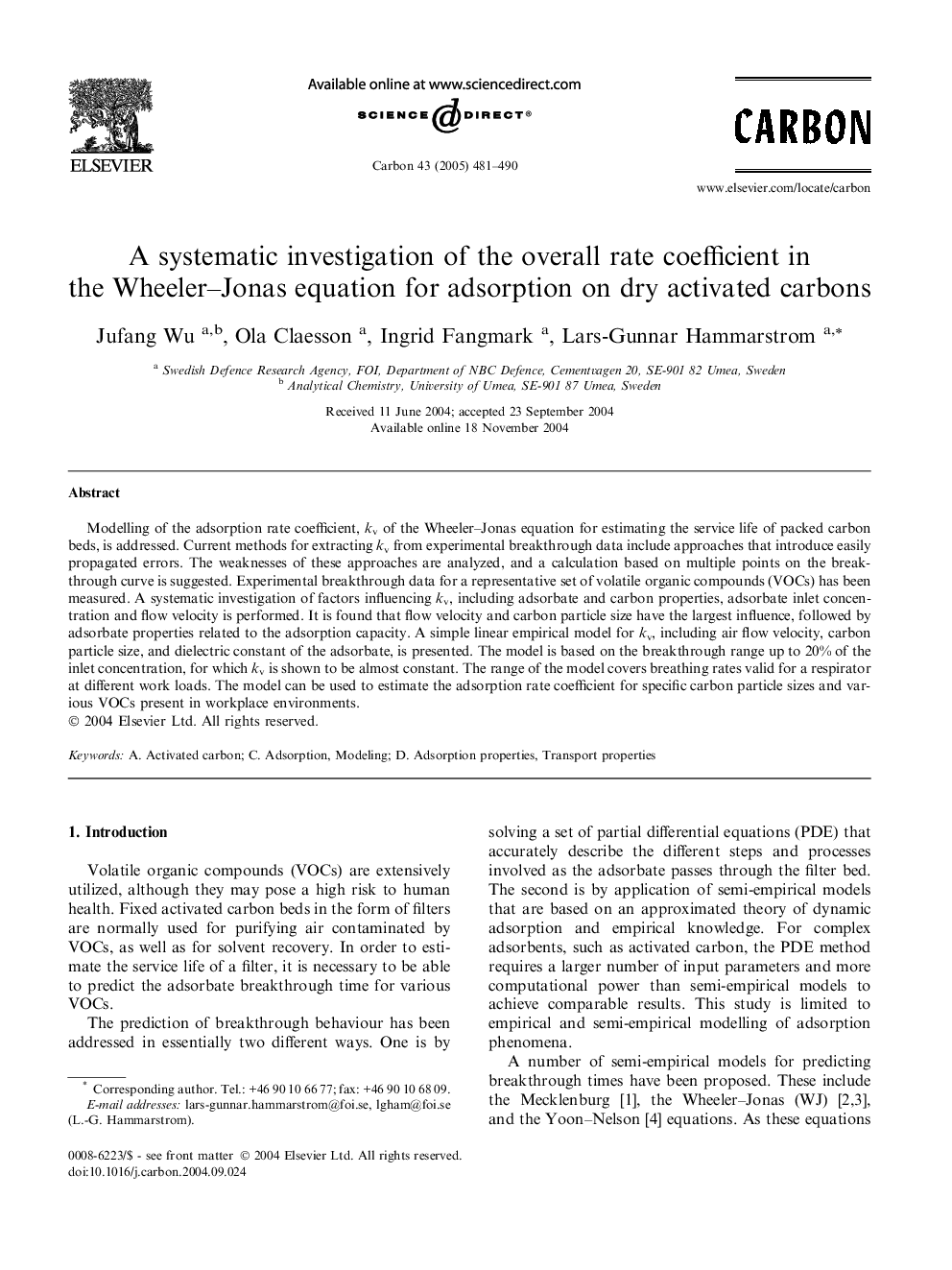| Article ID | Journal | Published Year | Pages | File Type |
|---|---|---|---|---|
| 10610568 | Carbon | 2005 | 10 Pages |
Abstract
Modelling of the adsorption rate coefficient, kv of the Wheeler-Jonas equation for estimating the service life of packed carbon beds, is addressed. Current methods for extracting kv from experimental breakthrough data include approaches that introduce easily propagated errors. The weaknesses of these approaches are analyzed, and a calculation based on multiple points on the breakthrough curve is suggested. Experimental breakthrough data for a representative set of volatile organic compounds (VOCs) has been measured. A systematic investigation of factors influencing kv, including adsorbate and carbon properties, adsorbate inlet concentration and flow velocity is performed. It is found that flow velocity and carbon particle size have the largest influence, followed by adsorbate properties related to the adsorption capacity. A simple linear empirical model for kv, including air flow velocity, carbon particle size, and dielectric constant of the adsorbate, is presented. The model is based on the breakthrough range up to 20% of the inlet concentration, for which kv is shown to be almost constant. The range of the model covers breathing rates valid for a respirator at different work loads. The model can be used to estimate the adsorption rate coefficient for specific carbon particle sizes and various VOCs present in workplace environments.
Related Topics
Physical Sciences and Engineering
Energy
Energy (General)
Authors
Jufang Wu, Ola Claesson, Ingrid Fangmark, Lars-Gunnar Hammarstrom,
